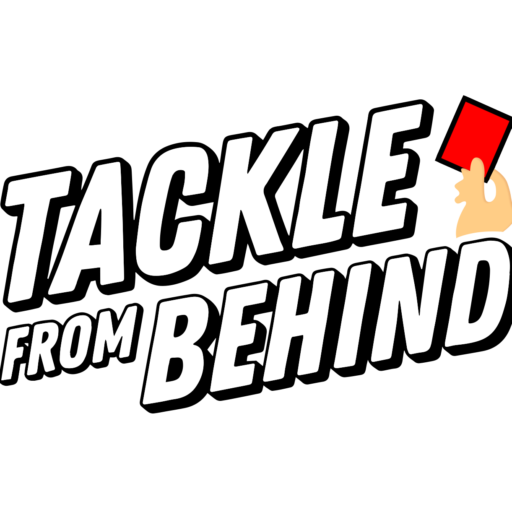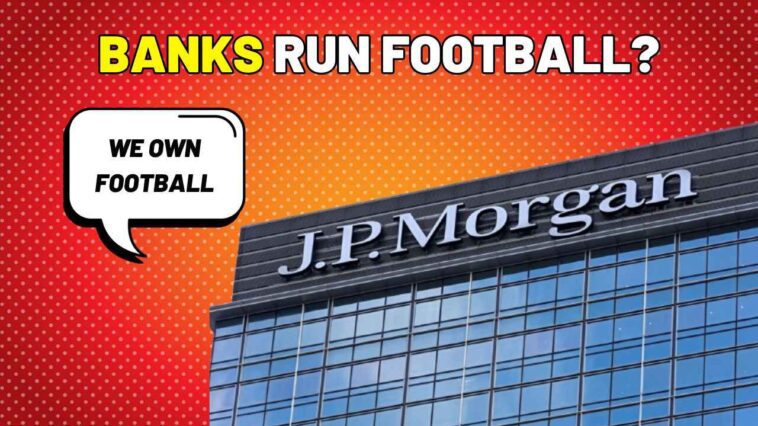Football isn’t just about goals, incredible dribbles, or legendary saves anymore. It’s now a billion-dollar industry, and where there’s money, big banks like JP Morgan and Goldman Sachs are never too far behind.
But have you ever wondered why these financial giants are so interested in football? What’s in it for them?
Let’s dive into the world of football finance and uncover why JP Morgan and its Wall Street friends are eager to have a slice of the football pie.
The Rise of Football as a Global Business
Football wasn’t always the multi-billion dollar spectacle we see today. Back in the day, football clubs didn’t generate huge amounts of money, and top players weren’t making millions.
In fact, the first Ballon d’Or winner only made 15 pounds a week! Some players, like Stuart Pearce in the ’80s, even had side jobs. He worked as an electrician while playing for Nottingham Forest.
Everything changed in the early ‘90s. With the formation of the Premier League, clubs gained more control over TV rights, striking lucrative broadcasting deals.
Sky’s exclusive deal with the Premier League was worth 60 million pounds per year—a massive 50% increase from previous deals. And that was just the beginning.
The influx of TV revenue reshaped football’s finances. Clubs started earning from three main streams:
- Ticket sales
- Commercial deals (like shirt sponsorships)
- Broadcasting rights
Of these, broadcasting rights became the gold mine. As technology improved, football’s audience grew globally, and the value of TV deals skyrocketed.
For example, the Premier League now claims to have nearly 5 billion viewers worldwide! Broadcasting has become the biggest source of income for many clubs.
With this much money in football, banks like JP Morgan and Goldman Sachs see a massive opportunity. They’re not just watching from the sidelines—they’re getting involved in a big way.
How JP Morgan and Goldman Sachs Control Football
Every time a goal is scored in La Liga, Goldman Sachs and JP Morgan earn a nice chunk of money—about 170,000 euros to be exact. And that’s just scratching the surface.
American banks see European football as an untapped market. They want in on the action, especially as clubs are increasingly taking out loans and investing in stadium infrastructure.
Real Madrid’s billion-dollar stadium? Financed by JP Morgan. Barcelona’s new project? You guessed it—Goldman Sachs and JP Morgan are behind it.
In 2021, JP Morgan even tried to revolutionize European football with the European Super League. While that project failed due to fan backlash, it showed just how much influence these banks have.
They’re no longer just spectators—they’re part of the decision-making process.
The Power Behind the Money
JP Morgan and Goldman Sachs control nearly 5 trillion dollars in assets. Just think about that. That’s more money than some countries’ entire economies! And now, a significant portion of that money is flowing into football.
These banks are making strategic investments in clubs, leagues, and stadiums.
For example, La Liga signed a deal with JP Morgan and CVC Capital Partners, receiving 2 billion euros in exchange for giving up 8% of future TV revenues for the next 50 years.
This type of deal gives clubs access to future cash upfront, allowing them to invest in players, facilities, and more. But it comes at a cost—fans worry that clubs are prioritizing profits over the game itself.
In fact, whenever a big football club is up for sale, it’s usually JP Morgan or Goldman Sachs that controls the process. They decide who gets a shot at owning the club.
And since many potential buyers need loans to fund these mega-deals, the banks can essentially control who gets to call the shots in European football.
Why Do Banks Love Football?
So, why are these banks so interested in football? Simple: they believe it’s undervalued.
Even though football has the biggest fanbase globally, it generates less revenue than American sports leagues like the NFL.
For example, NFL games attract around 70,000 spectators on average, while Premier League matches pull in about 40,000. This difference isn’t because the NFL is more popular; it’s because European stadiums are smaller.
JP Morgan and other investors see this as an opportunity. They’re pouring money into building bigger and better stadiums that can host other events, maximizing revenue for the clubs.
When it comes to TV revenue, the situation is even crazier. While 200 million people watched the 2024 Super Bowl, a staggering 600 million tuned in for El Clásico (the clash between Barcelona and Real Madrid).
Yet, the NFL makes way more money from TV deals than European football leagues do. This is where the banks see the biggest potential for growth.
JP Morgan’s involvement in La Liga’s future TV revenue deal highlights this belief. They’re betting on European football’s continued growth, especially in international markets.
The more people who watch the games, the more valuable the TV deals become—and the more money the banks make.
The Impact of Banks on Football Clubs
With all this money flowing into football, clubs are starting to feel the pressure to perform. Repaying these massive loans means clubs must maximize revenues at every turn.
That’s why you see clubs pushing for new sponsorships, expanding stadiums, and even altering how they sign players.
Take Chelsea, for example. The club recently adopted a strategy of signing young players to long-term contracts. This allows them to spread the transfer fee over several years, making it easier to manage finances.
This idea was taken straight from American sports like Major League Baseball (MLB).
But not everyone is happy with this shift. Critics argue that football is becoming too “Americanized.” European fans worry that decisions are being made with profits in mind, rather than what’s best for the game or the supporters.
The Future: More American Influence?
The idea of a European Super League isn’t dead yet. Even though JP Morgan’s initial attempt failed, the concept of creating a closed competition for Europe’s elite clubs is still alive.
Why? Because it guarantees more money for everyone involved—big clubs won’t face the risk of relegation, and TV revenue would skyrocket since every match would feature top-tier teams.
While fans may resist, the financial pull is strong. As more outside investment flows into football, there will always be pressure to maximize the return on that investment.
For JP Morgan and Goldman Sachs, that means finding new ways to make the game even more profitable, whether it’s through TV rights, sponsorships, or changes to the structure of European football itself.
Conclusion:
JP Morgan and other big banks aren’t just financing stadiums or helping clubs with loans—they’re changing the very fabric of football. From TV deals to player contracts, their influence is felt across the sport.
As football continues to grow as a global business, expect to see even more involvement from these financial giants.
For now, the beautiful game is no longer just about the fans and players—it’s also about the money, and the banks that control it.



